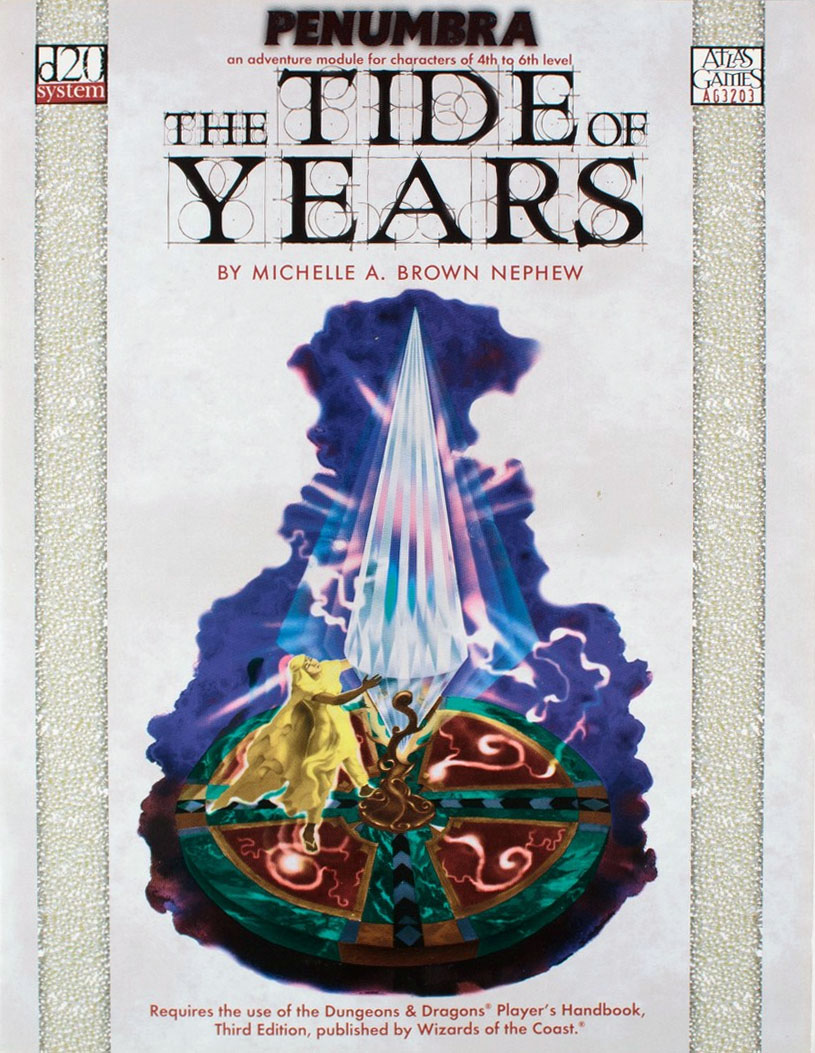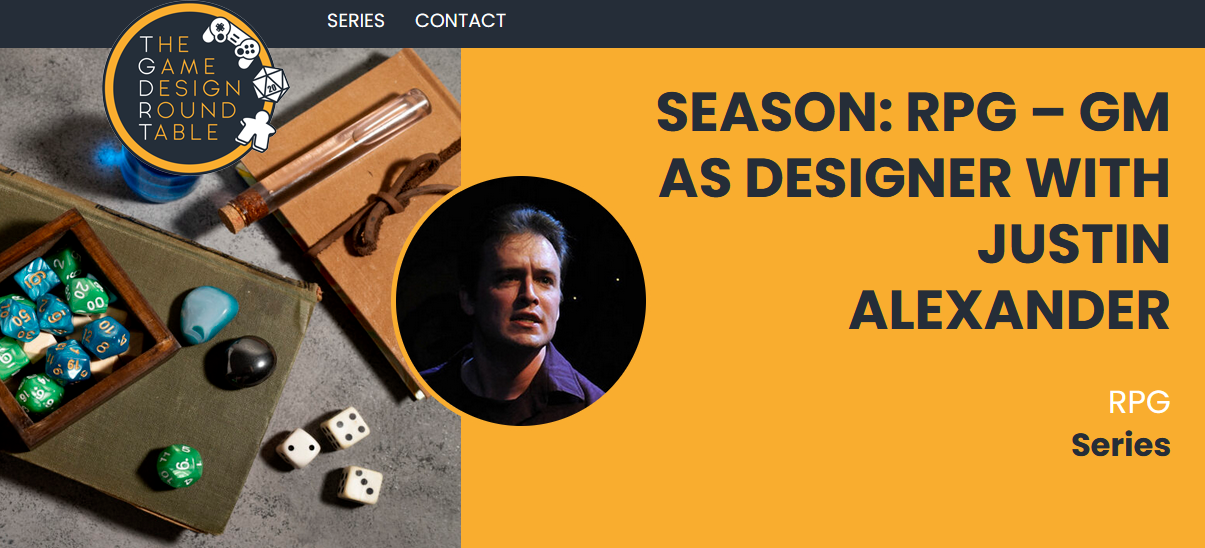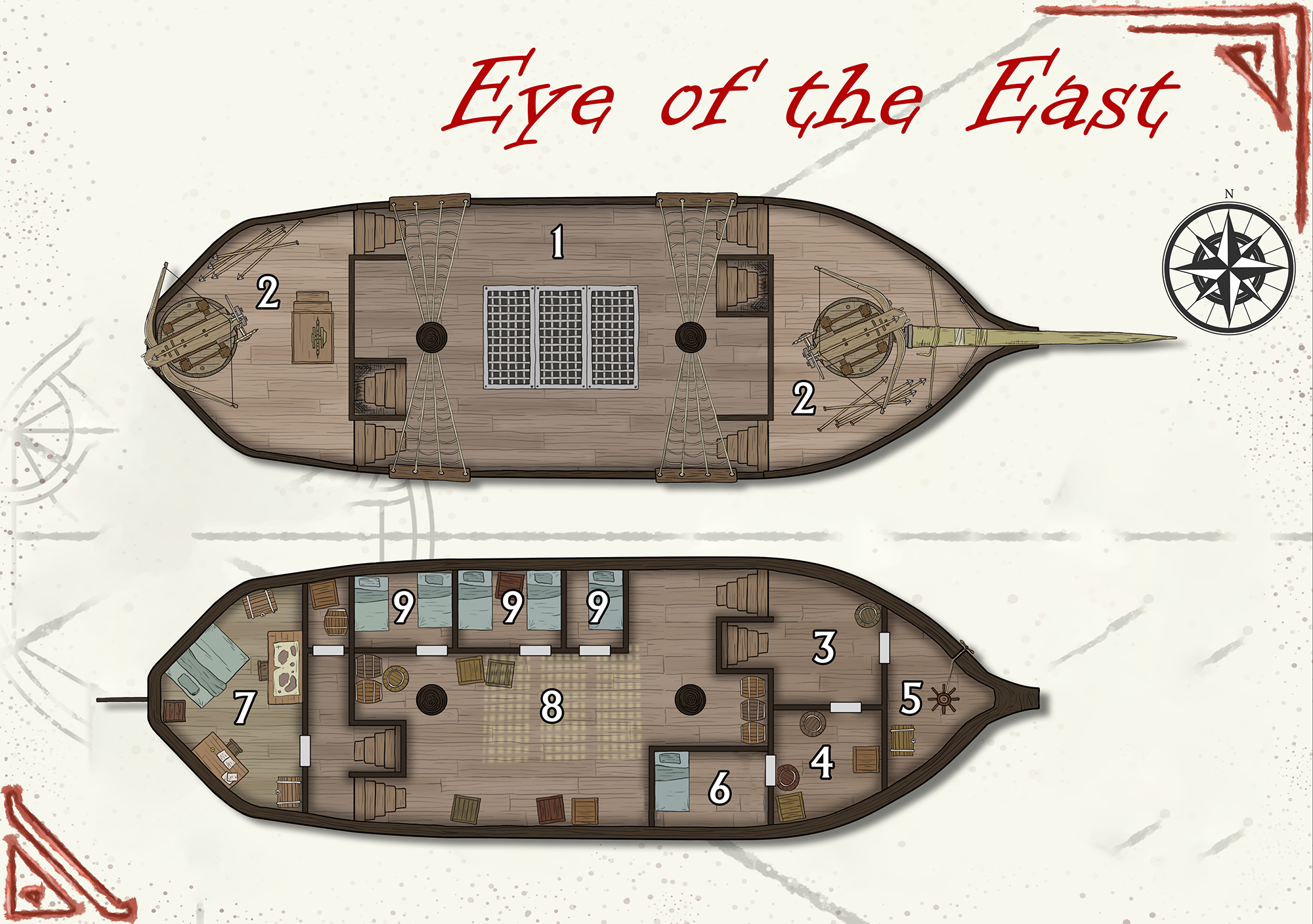
Johann asks:
[I’m running] an open table with three DMs. I was wondering about the information and knowledge players have and seek out. We ask one player to write kind of like a journal entry for the others, but only a very few dedicated people actually read these. The same goes for the wiki; only a few people look into this.
While we want to keep a low barrier to entry, we also think some information is critical for those players who return often, such as factions, their goals and issues, or rumors placed by us.
How do you handle this? Do you do kind of a recap at the beginning of the session?
Information flow in an open table is different from a dedicated table. In a dedicated table, the expectation is that all players will know everything that’s going on.
An open table is paradoxical because you’ll simultaneously have many more players than a dedicated table, but in many ways each individual player’s experience is more like a Campaign of One: There is no single, unified, overarching story of the group. Instead, each individual character is experiencing their own, individual story.
“How do I know what happened to Bill last session?” Well, either you were there or Bill told you or you asked Bill about it. That’s entirely about what the characters doing. As the GM, you don’t need to take on responsibility for any of that, beyond maybe giving the players a forum for communicating with each other away from the table (e.g., a Discord server or wiki). Either the players will share information with each other or they won’t. Either one is fine.
Other information, of course, will be more publicly known. I think of this as headline news. If somebody burns down the village church, for example, that’s something everybody in town is going to know about. Whether it was an NPC or a PC or a natural disaster that burned the church down, for this type of stuff I’ll prep a short, often bullet-pointed, bulletin and send it out to all of the players. The most effective method of distribution will depend on how you’re organizing your open table. For me:
- I’ll attach the headline news when I send out notices about upcoming sessions, which I’m currently doing via both e-mail and Discord.
- On my campaign status document, I’ll keep a list of recent headline news and review it at the beginning of each session. This might be the PCs literally reading newspapers, or it might just represent the “talk around town.” (In addition to the information itself, I find this is just a nice way to help kick things off and put the world in motion. It’s also a fun little reward when the players see something they’re personally responsible for crop up in the headlines.)
When you should cycle stuff off your Current Headlines list seems to be a bit more art than science, in my opinion. It depends partly on how vital/important the information is, how often people are playing, and also a general desire to not.
But it’s easy to imagine completely different options, too. You might actually write up the front page of a newspaper, for example, as something you can give as a handout or physically post in the game store where you’re playing. Or you could keep a list of headline news, but find more organic ways to weave it into your downtime procedures (rather than just reading out the list).
SCENARIO HOOKS
Of course, there’s also other types of information to be shared about the world. At the other extreme, you have scenario hooks, and this is where things can operate very differently at an open table.
For example, consider a treasure map revealing the location of the Temple of the Ancients. At a dedicated table, if a PC finds the treasure map, then they have it. At an open table, though, a player might find that map… and then literally never play again.
Under these conditions, the inverted Three Clue Rule breaks down due to information loss:
If the PCs have access to ANY three clues, they will reach at least ONE conclusion.
If you prep three leads pointing to the Temple of the Ancients, but then one of them exits the campaign, you’ve effectively broken the rule. In fact, it’s quite possible for all three leads to vanish! And even if they don’t, the rule can still break down due to the diffusion of players: The rule works partly through redundancy, partly through repetition, and partly because of what happens when the players combine multiple pieces of information together. But if each of your three clues is found by a different PC and those PCs rarely or never actually meet each other, the practical effect can be far closer to having just one clue three times over, rather than three clues reacting with each other and backing each other up.
Faced with this dilemma, it can be tempting to want to “liberate” the scenario hooks: Bill finds the treasure map, and the treasure map is added to some kind of group repository where any group can grab that lead and pursue it. (And you could imagine any number of diegetic explanations of this: For example, maybe all of the PCs are members of the Pathfinder Society or Delver’s Guild and are required to make full reports to the local branch office.)
Balanced against this, though, is the fact that secret knowledge is fun and all kinds of fun secondary and tertiary game play can emerge from it. (For example, maybe Bill offers to auction off the treasure map to the highest bidder. Or it motivates Bill to organize a secret expedition. Or someone else learns the map exists and tries to steal it from Bill. Some of the most memorable moments from my open tables involve players horse-trading information and getting excited when they get to reveal secrets to other PCs.)
Taking a step back, the broad situation here is that I have a scenario (e.g., the Temple of the Ancients) and I don’t want to just throw out all of that prep because the three clues pointing to that scenario randomly got misplaced in the dynamics of the open table.
There are generally some straightforward solutions for this:
- Include A LOT more leads pointing to the Temple of the Ancients. (And also track this stuff on a master revelation list, so that you can keep adding more clues if problems emerge.)
- Use a campaign structure that includes alternative methods for hooking scenarios. (For example, if the Temple of the Ancients is keyed to a hexcrawl, then even if the players miss all the clues, they could also just stumble across it via random exploration.)
- Build procedurally generated scenario hooks into your campaign structure. (For example, I’ve picked random hexes to restock rumor tables. Stuff like % tracks results for random encounters create similar effects.)
This isn’t to say that you should stop including clues and leads connecting adventures in your open table. This additional layer in the campaign creates different ways for the PCs to interact with the world, creating a far more dynamic and interesting situation. But it’s probably best to think of their effect as being far more localized than in a dedicated campaign: The primary effect is going to be to enhance and shape the experiences of individual characters, rather than being the primary backbone of the campaign as a whole.
THE OTHER STUFF
Somewhere between headline news that everyone hears about and individual nuggets of information like a treasure map that are accessed by specific individuals, there’s a potentially vast middle ground of stuff happening in the campaign world that the PCs might learn about.
A good example of this are faction downtime actions, as discussed in So You Want to Be a Game Master. The quick version is that you have a bunch of factions in the campaign world, they’re doing stuff, and the fallout from that stuff should be vectored so that it intersects the PCs.
(Rumors, job offers, and random encounters are typical examples of how this stuff can be vectored into the PCs. For example, a couple of gangs might have gotten into a turf war, and the PCs might hear about the gang violence or witness a gang shooting on the street or get hired by one of the gangs to assassinate the leader of the other gang or have one of their contacts get recruited by a gang.)
In a dedicated campaign, you can make a tick on a faction clock, figure out how to vector it into the PCs, and check it off your list: Job done! Good work!
If you do that at an open table, of course, the vector of the faction’s action will only intersect a tiny percentage of the players. Instead of sending shockwaves through the campaign, the faction’s actions are creating tiny little ripples.
To solve this you need to either escalate the faction’s action to headline news or you need to generate multiple vectors, likely keeping the faction action on your To Do list for three or four sessions so that multiple groups (and lots of players!) interact with the fallout.
THE SETTING LORE
A final consideration is bringing players up to speed on the campaign’s lore so that they can create their characters and understand what’s going on.
Here, again, I think you’ll find it most useful to think of the open campaign as many different solo campaigns. In other words, even at session fifty of the open table, a new player is effectively joining a brand new campaign. Imagine that you ran a dedicated campaign in Waterdeep and now you’re running a new campaign in Waterdeep with a completely different group of players: You would need to introduce these new players to the setting, but you wouldn’t spend a bunch of time talking about everything that happened in the previous campaign. The same thing is true of the open table.
Since you want quick character creation for an open table, I generally recommend having no more than a two-page handout and/or a five-minute spiel to orient a new player. In practice, I’ve found that I rarely need to update this. For example, in my Castle Blackmoor open table, the original introduction boiled down to: “There’s a castle and there’s a dungeon underneath it. Adventurers have been going down to explore its depths in the hopes of rescuing Baron Fant, who was kidnapped from the castle by monsters that emerged from the dungeons.”
Lots and lots of stuff happened within the dungeons, but this spiel was largely unaltered until it became common knowledge that Baron Fant had been transformed into a vampire. And even this was, obviously, a pretty minor adjustment: “Adventurers have been going down to explore its depths in pursuit of Baron Fant, who fled into the dungeons after being turned into a vampire.”
What you want to be cautious of is allowing more and more narrative to creep into your spiel. If my Castle Blackmoor campaign had continued, for example, you could imagine the spiel growing over time: “There’s a castle and there’s a dungeon underneath it. The campaign started when it was believed Baron Fant had been kidnapped by monsters that emerged from the dungeons, but it was later discovered that Baron Fant had actually been turned into a vampire and fled into the dungeons. He was later slain, but only after turning one of the adventurers who had gone after him. Lady Eilidh, as she became known, has withdrawn further into the depths of the dungeon, taking with her the vampiric remnants of the hobbit village that was also corrupted by the vampires. It’s currently pixie breeding season, diplomatic relations have been opened with a colony of werelions within the dungeon, and other expeditions continue apace.”
In reality, what I actually did was simplify my spiel: “There’s a castle and there’s a dungeon underneath it, which adventurers have been exploring.”
It wasn’t that current events weren’t relevant, but that information would organically flow to the player through
- the other players discussing which adventure they wanted to go on;
- the random rumors I rolled up for each new character; and
- the events of actual play (including headline news, as discussed above).
For similar reasons, having new players generally default to playing characters who are “new in town” (whatever that means for your particular open table) can be very useful. Even if a new PC isn’t actually new in town, thinking in that paradigm can still be a good way of identifying what information is truly essential.
It seems paradoxical, but often stripping down information a new player needs to process before they start playing can often help them not only get oriented faster, but also get them immersed into the lore faster (because they’ll start encountering it through play as a living experience as they build their own personal story).














